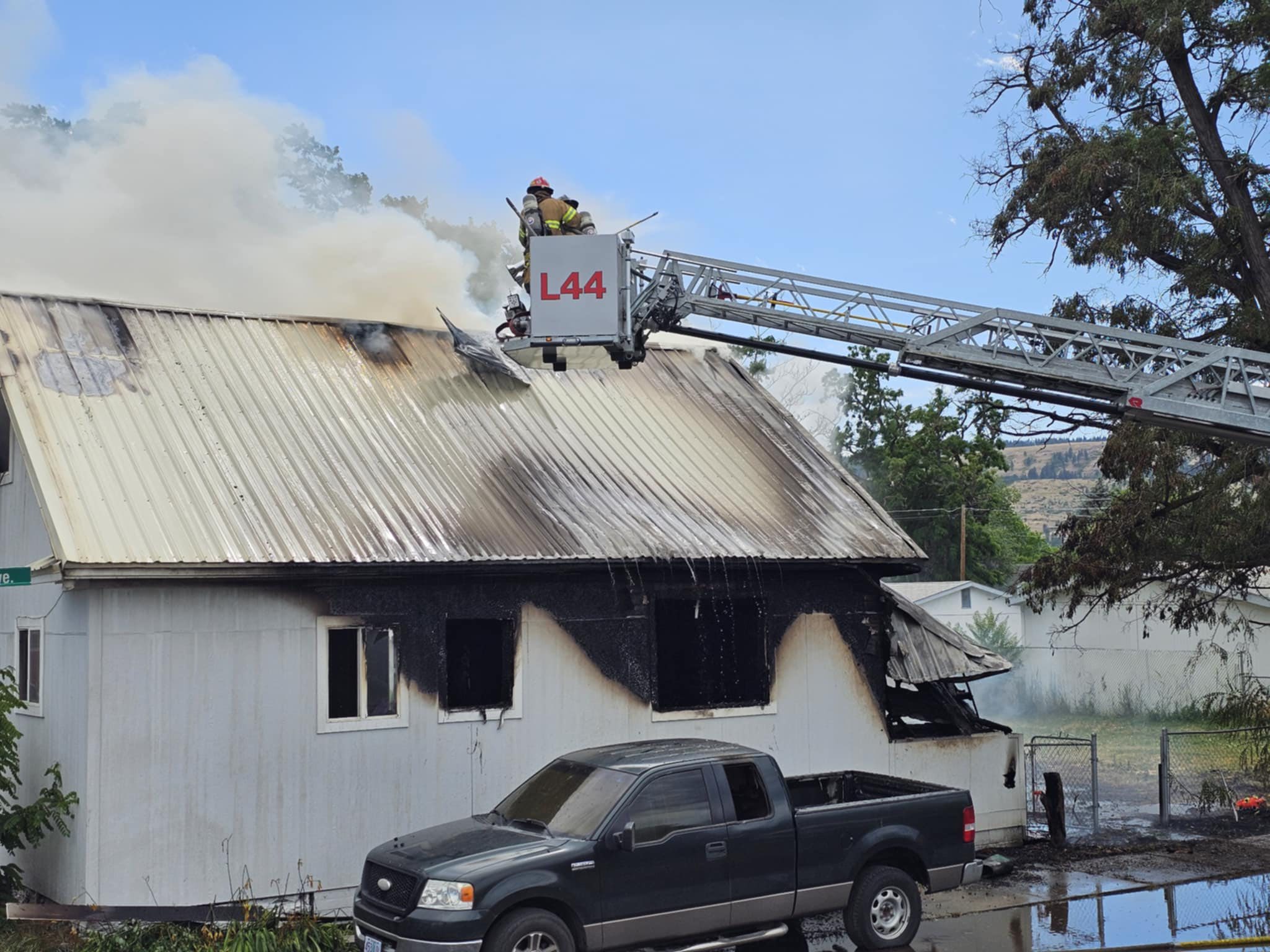COVID-19 drops faster than forecast as Oregon’s indoor mask mandate ending
Published 2:00 pm Friday, March 11, 2022
SALEM — COVID-19 numbers in Oregon continued a steady drop as the state prepared for a minute-before-midnight removal of its indoor mask mandate.
Reported infections, hospitalizations and deaths continued to decline from the peak of the omicron variant wave in late January.
The number of people in hospitals with COVID-19 could drop to levels under 100 cases per day by the end of April, lower than any time since the beginning of the original pandemic surge in spring of 2020, according to a new forecast from Oregon Health and Science University released late Thursday, March 10.
“It’s fair to say the omicron surge is behind us, though COVID is not,” said Peter Graven, OHSU’s lead COVID-19 analyst. “The risk right now is quite low for most healthy people in Oregon.
Graven said the risk is not the same for all people. Nearly 25% of Oregonians, including many children, have not had a single dose of vaccine and are at higher risk. Even accounting for natural exposure to the virus, Graven estimates about 13% of all state residents have no protection from the virus, a much lower risk than any time previously in the pandemic, but not insignificant.
“We need to remember that COVID-19 will continue to present a threat to people who are immunocompromised, older adults, and those with underlying health conditions.”
With numbers declining much faster than originally predicted, the forecast authored by Graven said the timeline might even be conservative.
“The current forecast is lower than last week’s,” the report stated.
The upbeat trend report came a day before Oregon’s 11:59 p.m. end of indoor mask mandates.
Two-year anniversary
When cases began rising from omicron in December 2021, it was the sixth wave of the virus since it first arrived in Oregon at the end of February 2020.
March 10 also marked the two-year anniversary of the declaration of a pandemic by the World Health Organization. The virus has killed over six million people, including 964,500 in the United States since it was first discovered in China on the last day of 2019, the Johns Hopkins Coronavirus Resource Center reported.
Oregon has recorded 6,854 deaths, according to the official state estimate.
Health experts have said the count in many parts of the world is significantly too low given usual death rates. The Institute for Health Metrics and Evaluation at the University of Washington issued a report on March 10 saying that the actual death toll is likely three times higher worldwide.
The Oregon Health and Science University weekly forecast said time spent indoors with other people, shopping indoors, going to restaurants and attending events with large crowds had all returned to levels seen prior to the start of the omicron spike in December.
OHSU said that even prior to the official end-date of indoor masking, Oregonians were tending to cover up less often in the past week.
Oregon Gov. Kate Brown joined with 13 other governors to ask U.S. Health and Human Services Secretary Xavier Becerra to extend the national public health emergency for at least three months beyond its scheduled expiration on April 16.
Brown has announced she will lift the state emergency on April 1. But she and the governors of California, Washington, Nevada, Hawaii, Colorado, New Mexico, Illinois, Michigan, Minnesota, Wisconsin, Delaware and Rhode Island said the federal emergency should remain so states can make an orderly transition to a post-pandemic period.
Ramping down
Under a timeline established under President Donald Trump, the federal government has pledged to give states 60 days notice of their intent to drop the federal emergency. The governors asked that the time be extended to 90 days.
The original federal emergency declaration was made in January 2020, after the Centers for Disease Control confirmed the first COVID-19 case in Washington state. The order has been extended eight times under Trump and Biden.
The federal order allows states to keep residents on Medicaid — such as the Oregon Health Plan — without predetermining eligibility. It maintains nutritional aid for low-income families. Hospitals are also allowed to use alternate sites for treatment, and use expanded telehealth virtual medical checks.
The governors’ letter said it “will take significant time to thoughtfully ramp down, phase out, or, in some cases, extend permanently.”
Congressional Republicans wrote Biden in February asking that the declaration be allowed to lapse, citing a drop-off in the omicron wave and high rates of public access to vaccines.
Continuing cases
The Oregon Health Authority on March 10 reported 433 new cases and 54 deaths. There were 271 people in Oregon hospitals with COVID-19, up one person from the previous day. There were 45 COVID-19-positive people in intensive care units, down 10 from the day before.
The OHSU report said that hospital regions covering Central and Southwestern Oregon were continuing to report higher levels of severe illness for COVID-19 than other parts of the state.
The forecast said that under existing conditions, the hospitalization numbers would continued to decline, passing under 200 per day on March 31, and less than 100 on April 27.
The test positivity rate fell to 3.1%, well below the 5% that OHA has said throughout the pandemic is manageable. The reported cases per 100,000 residents is 73.7.
Ten of Oregon’s 36 counties reported a per capita rate of over 100. Most were smaller counties — 464 in Grant, 278.6 in Sherman. Among more populous counties, Linn was 139.8 and Crook was 115.2.
Counties with between 100 and 110 cases per 100,000 included Benton, Jefferson, Coos, Curry, Gilliam, and Josephine.
OHA on March 9 reported that of the 4,104 cases of COVID-19 reported the week of Feb. 27 to March 5, 59.4% were in unvaccinated people, while 50.6% were vaccine breakthrough cases.
But the outcomes of infections sharply differed. Unvaccinated people were about 2.8 times more likely to become infected than vaccinated people and four times more likely than those who were fully vaccinated and had received a third booster shot.
Among all breakthrough cases to date, only 2.5% required hospitalization and 0.5% died.
The median age of the breakthrough cases during that period was 55. The median age of death among vaccinated people is 80.
“Vaccination remains the most effective tool to reduce the spread of COVID-19,” the OHA report said.









